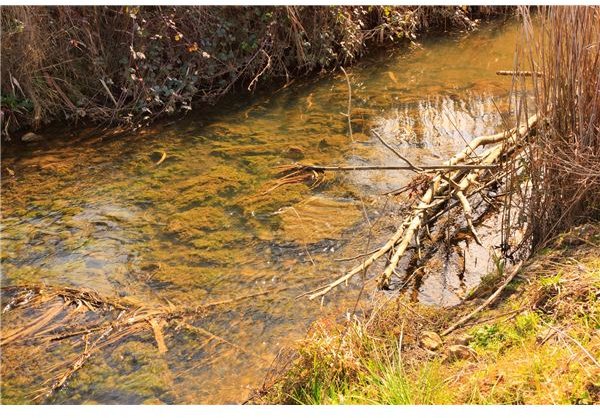The Dangers of Polychlorinated Biphenyls (PCBs): Why Are They Harmful?
PCBs don’t break down easily, and they are difficult to destroy. Because of that, they’re highly persistent in the environment, and when they were detected in the Great Lakes in 1966, attention began to focus on their potential environmental impact. Concern over that impact led to a ban on their production and import in Canada in 1977, and the USA in 1979.
What Are They?
PCBs belong to a class of man-made industrial chemicals (chlorinated hydrocarbons) manufactured in the United States for over 50 years. They were never manufactured in Canada, but they were used in both countries in hundreds of specialized industrial and commercial applications because they are chemically stable, have a high boiling point, and possess electrical insulating properties. They were used in coolants, lubricants, and sealing and caulking compounds; in electrical, heat transfer, and hydraulic equipment; in pigments, dyes, and carbonless copy paper; and as plasticizers in paints, plastics, and rubber products.
Why Are PCBs a Problem?
Although they’re no longer commercially produced, PCBs are still found in products and materials produced before the ban, and they can be released into the environment in a number of ways. They can escape from electrical transformers, be dumped illegally or improperly, or be released from poorly maintained hazardous waste sites, or from landfills not designed to handle hazardous waste.
PCBs can also be released in several different forms, with different effects. If released as a liquid, they can find their way into nearby soil and water. High temperature fires (intentional or unintentional) can turn liquid PCBs into an aerosol form which can be inhaled, or can be transported elsewhere by air currents. If PCBs burn at high temperatures, they can also be converted into far more toxic dioxins and furans.
Because PCBs don’t readily break down, they may cycle between air, water, and soil for a long time. Studies have found that PCBs can be transported by global air currents, and the lighter the form of PCB, the farther it can travel. Trace levels of PCBs have been found all over the world, even in ice, and snow and sea water, far from where they originated.
Low levels of PCBs also make their way from the environment into food. They can accumulate in the leaves and above-ground parts of plants and crops and can also accumulate in the cells of small organisms and fish. Their presence in both food and the environment means that almost everyone has been exposed to low levels of the chemical.
Affect on Human Health
PCBs are one of the most widely studied pollutants, and scientists have conducted numerous studies to assess their potential to cause cancer in animals and humans. While PCBs have been shown to cause cancer and a number of serious non-cancer health effects in animals – including effects on the immune system, reproductive system, nervous system, and endocrine system – there is not currently enough information to establish any relationship between exposure to PCBs and the incidence of cancer in humans.
Most of what is known about the effects of PCBs on human health is based on studies of exposures due to accidental releases or job-related activities. These exposures are much higher than the levels typically found in the environment. Little is known about the health impacts that result from long-term exposure to low concentrations of PCBs.
Research suggests that low-level exposures to PCBs are unlikely to cause adverse health effects. However, PCBs are highly persistent in living tissue as well as in the environment and can accumulate, and remain in the human body for years. The consensus among scientists around the world is that PCBs should be (and are) classified as probable human carcinogens.
Minimizing Your Risk
Environment Canada suggests the following ways to reduce risk of exposure and health effects related to PCBs:
- Follow regional/provincial/territorial advice about limiting your consumption of wild game and sports fish. In addition, you can prepare game and sports fish in a way that minimizes your exposure to PCBs. Discard the inner organs and remove the skin and all visible fat. Broil, bake, boil or grill the flesh, but avoid frying as this cooking method retains the fat;
- There is no need to restrict consumption of fish from the commercial food supply (e.g., fish bought in a supermarket);
- Never burn wood that has been treated or painted, since burning materials that contain PCBs can create dioxins and furans; and
- If you are at risk for exposure to PCBs in the workplace, be sure to take appropriate safety precautions and follow all prescribed decontamination procedures.
References
- It’s Your Health - PCBs [Health Canada, 2005]. (n.d.). http://www.epa.gov/epawaste/hazard/tsd/pcbs/index.htm
- Basic Information| Polychlorinated Biphenyls (PCBs) http://www.epa.gov/wastes/hazard/tsd/pcbs/about.htm
- PCB contamination and food safety | Food Safety Net. http://foodsafety.suencs.com/4032
- Polychlorinated Biphenyls (PCBs) http://www.chemicalsubstanceschimiques.gc.ca/fact-fait/pcb-bpc-eng.php
- Environment Canada http://www.ec.gc.ca/bpc-pcb/default.asp?lang=En&n=52C1E9EF-1
- Health Effects| Polychlorinated Biphenyls (PCBs) http://www.epa.gov/osw/hazard/tsd/pcbs/pubs/effects.htm
